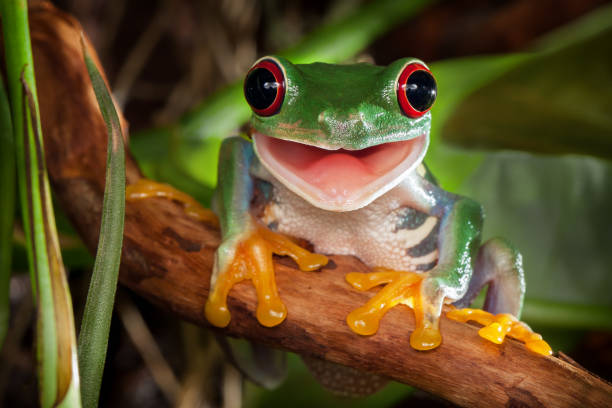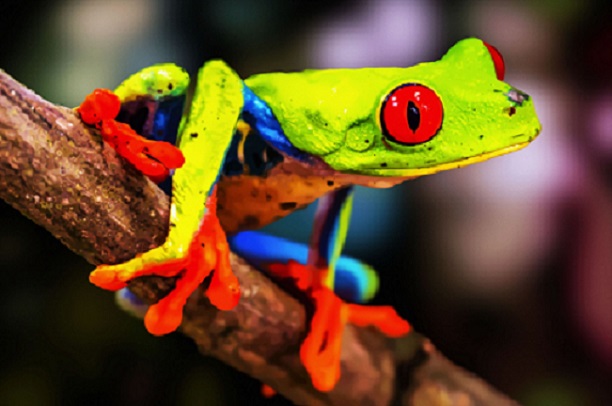Cool Frogs are Cool


As the name implies, these frogs are typically found in trees or other high-growing vegetation. They do not normally descend to the ground, except to mate and spawn, though some build foam nests on leaves and rarely leave the trees at all as adults.
Many treefrogs have sticky hands For instance, the grey treefrog (Dryophytes versicolor) can change its color from green to grey to yellow.[3]
Treefrogs are usually tiny as their weight has to be carried by the branches and twigs in their habitats. While some reach 10 cm (4 in) or more, they are typically smaller and more slender than terrestrial frogs. Treefrogs typically have well-developed discs at the finger and toe tips; the fingers and toes themselves, as well as the limbs, tend to be rather small, resulting in a superior grasping ability. The genus Chiromantis of the Rhacophoridae is most extreme in this respect: it can oppose two fingers to the other two, resulting in a vise-like grip.
Almost all male frogs attract mates with advertisement calls. Each frog species has its own call so female frogs can listen for potential suitors of their own species. The frog call that most people are familiar with—“Ribbet!”—belongs to the Baja California tree frog (Pseudacris hypochondriaca). The ribbeting call has been incorporated into outdoor scenes of many Hollywood movies, even outside of the frog’s range.
Some frogs hatch as miniature adults. More commonly, however, tadpoles emerge from frog eggs. As tadpoles mature, they lose their tail and grow legs until they eventually reach their adult form. The lifespan of tree frogs varies among species. Some of them are long-lived, such as the Australian green tree frog (Litoria caerulea), which is often kept in captivity for upward of 15 years. Species with lifespans of less than three years are considered short-lived. North America’s gray tree frogs (Hyla versicolor and Hyla chrysoscelis) are somewhere in the middle with a lifespan of five to nine years.
Tree frogs are found on every continent except Antarctica, but they’re most diverse in the tropics of the western hemisphere. About 30 species live in the United States, and over 600 can be found in South and Central America. Not surprisingly, lots of tree frogs are arboreal, meaning they live in trees. Special adaptations like toe pads and long legs aid them in climbing and jumping. Non-arboreal tree frogs find habitats in lakes and ponds or among moist ground cover.
Tree frogs are consumed by many different carnivorous animals. Mammals, reptiles, birds, and fish all eat tree frogs. Many of the frogs rely on camouflage to protect themselves from predators, and the more arboreal species escape ground-dwelling predators by hiding in trees.
 Cool Frogs
Cool Frogs